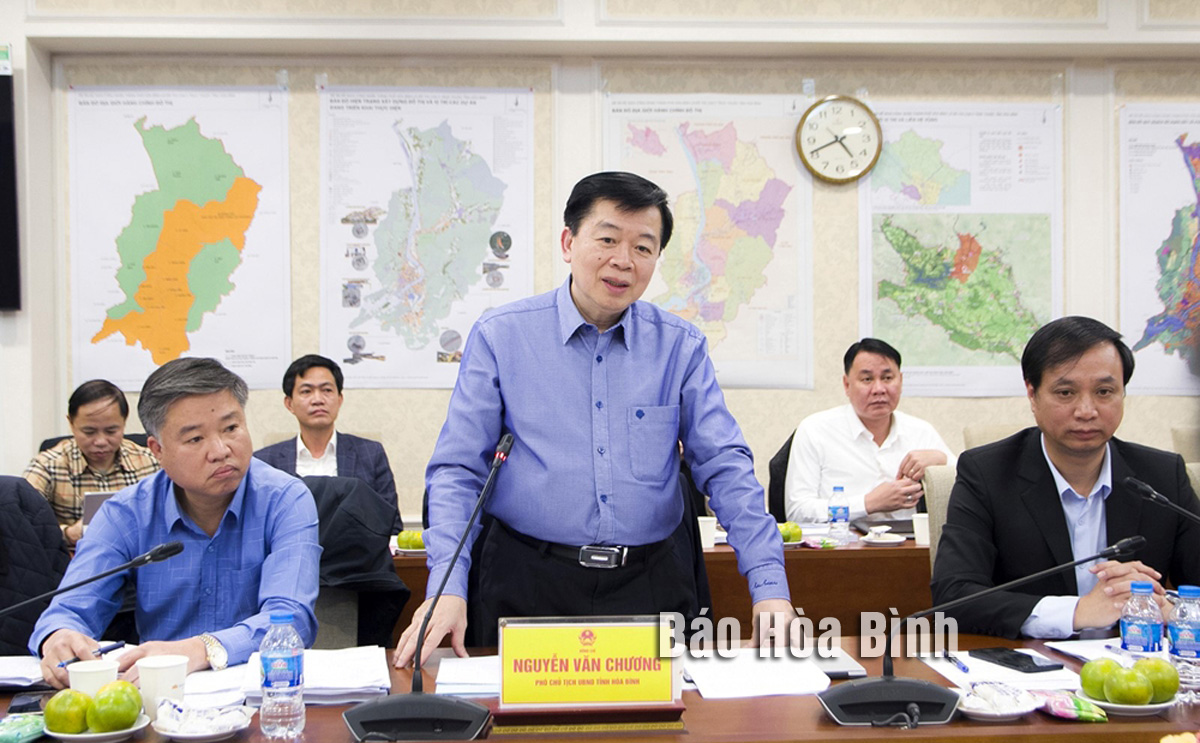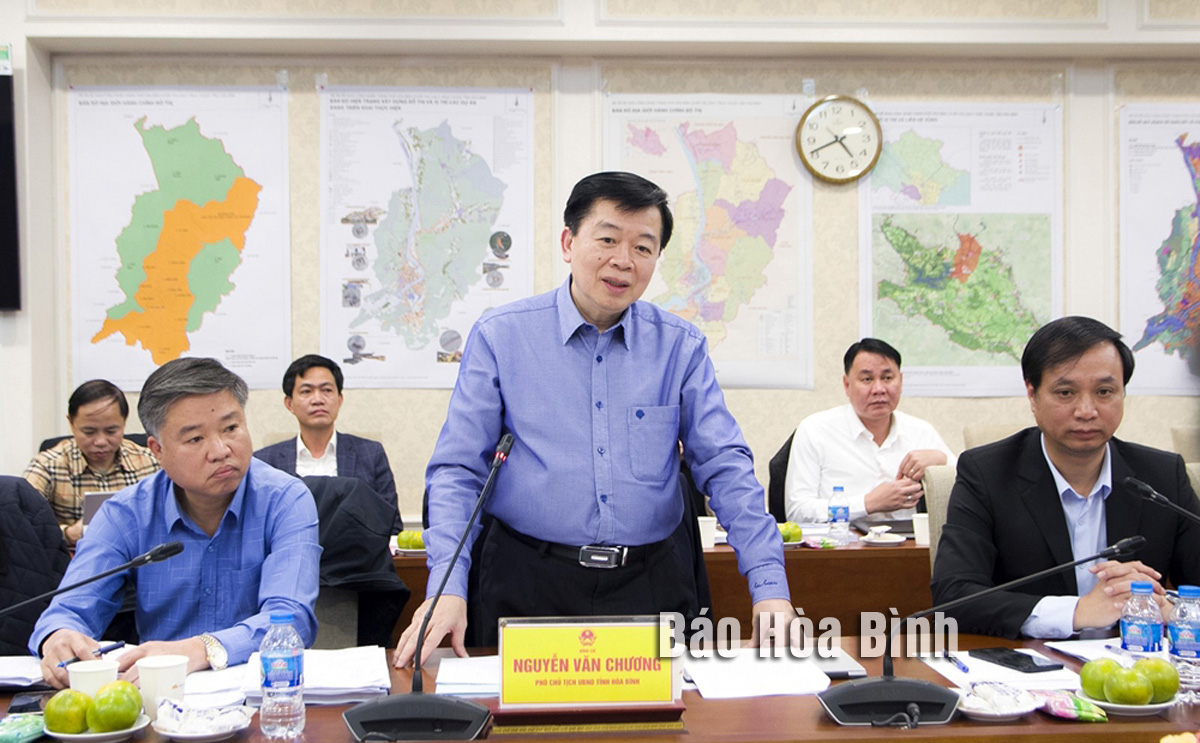
Deputy Minister of Construction Nguyen Viet Hung chaired a meeting in Hanoi on December 23 to assess a proposal on recognising Hoa Binh city as a tier-2 urban area under Hoa Binh province. Attending the event was Vice Chairman of the provincial People’s Committee Nguyen Van Chuong, Secretary of the Hoa Binh City Party Committee Nguyen Van Thang, as well as leaders from various departments and the Hoa Binh City People's Committee.
Vice Chairman of the provincial People’s
Committee Nguyen Van Chuong speaks at the event.
The proposal on upgrading Hoa Binh city from a
tier-3 to a tier-2 urban area by 2025 aligns with the National Urban
Classification Plan for 2021-2025, the 2021-2030 Urban and Rural System
Planning with a vision to 2050; and Hoa Binh province's master planning scheme
for the 2021-2030 period, approved by the Prime Minister. The scope of the
proposal covers the entire administrative area of Hoa Binh city, spanning
roughly 348.65 sq.km, including 19 administrative units at the communal level.
The inner city area consists of 12 existing wards and Mong Hoa commune which is
planned to become a ward.
Hoa Binh city's master planning scheme through
2045 envisions the city as the political, administrative,
socio-economic-cultural, and scientific-technical centre of Hao Binh province.
It will be one of the central urban areas in the Hanoi Capital region, an
ecological city rich in cultural and historical heritage, with an important national
defence and security position in the western part of the Capital Region. The
city will feature landscapes along the Da river and be connected to Hoa Binh
lake.
By the end of 2023, the population of Hoa Binh
city was estimated at 177,000, with around 83.6% living in urban areas. The
overall population density was some 1,004 people per sq.km. The city's average
economic growth rate over the past three years was 11.93%. The economic
structure has shifted positively, with an increasing proportion of industrial,
construction, and trade-service sectors, and a decreasing share of agriculture.
The rate of non-agricultural labour was 82.2%. The average monthly income per
capita was 1.5 times higher than the national average while the
multidimensional poverty rate decreased to 1.38%, and the rate of solid houses
was about 97.06%.
Atthe meeting, the appraisal board gave
the proposal a score of 84.16 out of 100 points. However, the board provided
suggestions for Hoa Binh city to improve certain criteria before submitting the
proposal to the Prime Minister for official recognition.
On behalf of the local administration, Chuong
acknowledged the board's feedback and committed to quickly directing relevant
departments to revise and complete the proposal.
Hoa Binh province’s economy posted an impressive Gross Regional Domestic Product (GRDP) growth rate of 12.67% in the first quarter of 2025, representing a 12.76% year-on-year increase, the highest rate recorded since the beginning of the current tenure, according to the provincial Statistics Office. This robust growth reflects years of strategic groundwork and sets a strong foundation for the province’s annual growth target of over 10%.
With a focus on cash crop farming with science - technology application and brand building, Lac Thuy district is gradually increasing production value, improving people's life quality, and laying the foundation for sustainable socio-economic development.
In recent years, the economic development model "Hoa Binh Earthworm Farm” run by Mr. Bui Van Dang in Co Giua Hamlet, My Thanh Commune (Lac Son district) has not only brought stable economic value but it is also environmentally friendly, helping to protect and reduce pollution, contributing to the construction of a green and sustainable agriculture.
Dao Village’s honey – a product certified with a 3-star OCOP (One Commune One Product) rating by Thong Nhat Agricultural Cooperative in Dao Village (Hoa Binh City) – is highly regarded by consumers for its quality, richness, and variety in packaging. The distinctively sweet taste of Dao Village’s honey leaves a lasting impression on anyone who has tried it.
In alignment with Project No. 07-DA/TU, issued by the Hoa Binh provincial Party Committee on November 1, 2021, Lac Thuy district has actively promoted investment and supported the sustainable development of its industrial and handicraft sectors during the 2021–2025 period. Alongside this, the district has remained committed to preserving and revitalising traditional craft villages.
Located in the northern part of Lac Thuy district, with a temperate climate and fertile soil, Phu Thanh commune has great potential and advantages in growing tea. The long-standing experience, combined with strict adherence to organic farming practices in the tea gardens, ensures that the dried tea products from Phu Thanh and Lac Thuy as a whole are sold out immediately upon production, providing a stable and prosperous life for the local people.



